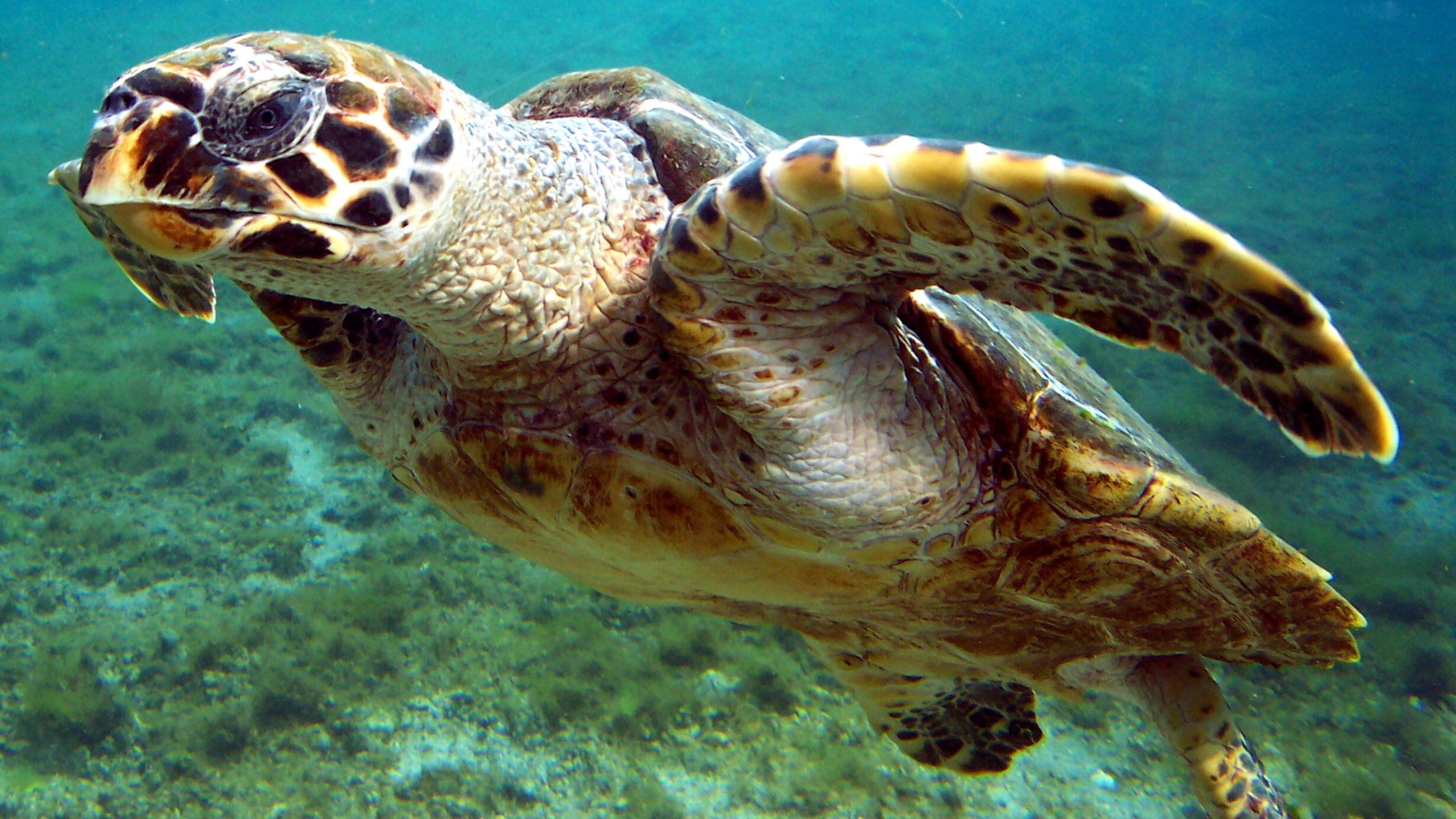 Some researchers think the biofluorescent glow of the shells of Hawksbill sea turtles (Eretmochelys imbricata) is caused by algae.
Some researchers think the biofluorescent glow of the shells of Hawksbill sea turtles (Eretmochelys imbricata) is caused by algae.B. navez/Wikimedia Commons
In the special exhibition Unseen Oceans, visitors come upon a brilliant floor-to-ceiling spiral of models of underwater species biofluorescing just as they would in life. Among the catsharks, breams, and other fishes reflecting neon greens and reds is a glowing reptile: a hawksbill sea turtle.
Only three years ago, this species, Eretmochelys imbricata, which is currently listed as critically endangered by the International Union for Conservation of Nature, wouldn’t have made the cut. But on a night dive during a July 2015 expedition to the Solomon Islands in search of biofluorescent corals, Museum researchers discovered that the hawksbill sea turtle glows, too.
They were using a special camera equipped with blue lights when, about 65 feet (20 meters) down, a bright-colored turtle suddenly popped into view like a “UFO … a bright red and green spaceship,” recalls Museum Research Associate David Gruber. Scientists suspect that some, if not all, of the red glow might be produced by algae living on the turtles’ shells—but more research is needed.
Find out how Museum researchers first discovered that sea turtles had biofluorescent shells.
Meanwhile, another group of scientists at the Museum has spent more than a decade studying hawksbill sea turtles at the Palmyra Atoll National Wildlife Refuge, a remote ring of islets and associated marine habitats in the Pacific Ocean.
Courtesy of Christian Gloor/Wikimedia Commons
When the research program began in 2005—run by the Museum’s Center for Biodiversity and Conservation (CBC) along with scientists from the City University of New York, U.S. Geological Survey, and National Institute for Standards and Technology—very little was known about the highly migratory species and its life at the atoll.
Since then, in-water habitat studies using acoustic and satellite telemetry have advanced understanding of these turtles—as well as that of Palmyra’s green sea turtles (Chelonia mydas), their genetics, interactions with their habitats, feeding habits, and the health of both populations, including their distribution and movement around the atoll and the broader Pacific.
Learn about the Center for Biodiversity and Conservation's sea turtle research program at the Palmyra Atoll National Wildlife Refuge.
“By studying the ecology and behavior of the healthy turtles at this critical foraging ground, we are able to deepen understanding of these endangered species and also inform conservation management plans for the Atoll and across the Pacific,” says Eleanor Sterling, Jaffe Chief Conservation Scientist at the CBC.
Hawksbill sea turtles play an essential role in the life of coral reefs, plucking out sponges, their main food source, from the reef’s surface. This in turn provides better access for reef fish to feed and may give the corals a favorable edge in the competition with the sponges for space.
A version of this story appeared in the Winter issue of the Member magazine, Rotunda.